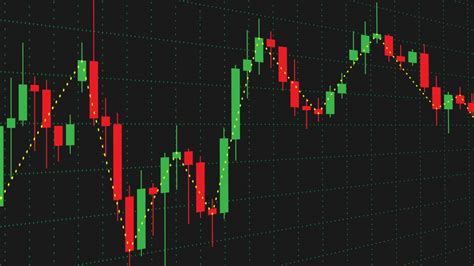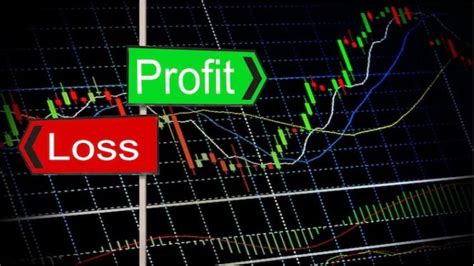Global financial markets operate through the constant exchange of currencies, influencing economies, businesses, and individual traders. Forex trading facilitates these transactions, allowing participants to speculate on price movements and capitalize on fluctuations in exchange rates. Driven by liquidity, volatility, and macroeconomic factors, this decentralized marketplace operates 24 hours a day, connecting traders worldwide. Understanding how trades are executed, the role of brokers, and the impact of global events provides clarity on market movements and potential opportunities. Mastering the essentials of analysis, risk management, and strategy development strengthens decision-making and enhances long-term success.
Fundamentals of Forex Trading
Global currency markets operate as a dynamic ecosystem, where price movements depend on liquidity, speculation, and institutional participation. Forex trading revolves around currency pair fluctuations, broker models, and market timing, shaping trade execution and risk exposure. Understanding key components enhances precision in decision-making.
Currency Pairs and Market Structure
Forex markets are built upon currency pairs, categorized into three primary groups:
Major Pairs: EURUSD, USDJPY, GBPUSD, USDCHF, AUDUSD, USDCAD, NZDUSD. These pairs have high liquidity and low spreads.
Minor Pairs: EURGBP, EURJPY, GBPJPY. These exclude the US dollar but remain actively traded.
Exotic Pairs: Combinations involving emerging market currencies, leading to higher volatility and wider spreads.
Market Liquidity and Volatility
High liquidity: Major pairs like EURUSD and USDJPY offer tight spreads and fast execution.
Moderate liquidity: Minor pairs, such as EURGBP, experience slightly wider spreads and less volume.
Low liquidity: Exotic pairs often face larger spreads and increased price swings.
Currency selection impacts execution speed, volatility exposure, and potential profit margins.

Trade Execution and Market Participants
Banks, financial institutions, and retail traders interact to form the structure of forex trading. Trade types and liquidity sources define pricing efficiency.
Participants in the Forex Market
| Participant | Role in the Market | Influence on Liquidity |
|---|---|---|
| Central Banks | Control monetary policy, interest rates | High |
| Institutional Traders | Hedge funds, banks, and investment firms | Medium to High |
| Retail Traders | Individual participants using platforms like MetaTrader 4, cTrader | Low to Medium |
| Market Makers | Provide bid-ask spreads, facilitate trading | High |
Market depth and pricing efficiency improve with higher participation.
Retail traders rely on broker platforms for price execution and analysis.
Liquidity providers influence bid-ask spreads, affecting entry and exit points.
Execution speed depends on broker type and order execution model.
Role of Liquidity Providers and Brokers
Two primary execution models define trade execution in forex trading:
Market Makers: Act as counterparties to traders, providing fixed spreads but potential conflicts of interest.
ECN (Electronic Communication Network) Brokers: Connect traders to liquidity pools, offering raw spreads with commissions.
STP (Straight Through Processing) Brokers: Automatically route orders to liquidity providers, reducing human intervention.
Execution and Order Fulfillment
Slippage Risk: Higher during volatile periods, impacting execution price.
Spread Variability: Brokers offering raw spreads often provide lower costs for high-volume traders.
Commission vs. Spread Costs: ECN brokers charge commissions, while market makers profit from spreads.
Understanding broker types aids in optimizing trade execution, ensuring alignment with risk tolerance and forex market conditions.
Forex Market Sessions and Time Zones
Global trading operates 24 hours a day, cycling through London, New York, Tokyo, and Sydney sessions. Timing influences price action and volatility.
Key Trading Sessions
Asian Session (Tokyo, Sydney): Lower liquidity, stable price movements, major activity in AUDUSD, USDJPY, NZDUSD.
European Session (London): High liquidity, major moves in EURUSD, GBPUSD, EURGBP.
US Session (New York): Overlaps with London, creating peak volatility in EURUSD, GBPUSD, USDJPY.
Late US & Sydney Overlap: Low liquidity, price consolidation in most pairs.
Market Timing Effects
Session overlap (London-New York) increases liquidity, favoring scalpers and day traders.
News events impact volatility, affecting order execution.
Timeframes like H1, H4, and D1 influence strategy selection.
Aligning strategies with market hours optimizes trade efficiency, reducing slippage and enhancing timing accuracy.
Trading Strategies and Market Analysis
Market conditions shift based on economic forces, technical patterns, and currency correlations. Forex trading strategies integrate fundamental analysis, technical indicators, and risk management tools to identify high-probability opportunities. Aligning approaches with timeframes, trading styles, and price action improves trade execution and decision-making.
Fundamental vs. Technical Analysis
Two primary methods define market evaluation:
Fundamental Analysis
Examines macroeconomic factors like GDP, interest rates, and inflation.
Central bank policies, including the Federal Reserve, ECB, and Bank of Japan, drive currency fluctuations.
News events influence volatility, impacting pairs like EURUSD, GBPUSD, and USDJPY.
Technical Analysis
Uses Moving Averages, RSI, MACD, and Fibonacci Retracement for pattern recognition.
Relies on historical price movements rather than external economic factors.
Works best for traders using MetaTrader 4, cTrader, and TradingView platforms.
Both approaches can be combined to strengthen trade predictions, aligning market sentiment with price action.

Candlestick Patterns and Chart Reading
Analyzing price movements through candlestick formations provides valuable insights into bullish and bearish trends.
Bullish Patterns
Hammer: Indicates potential reversal at the bottom of a downtrend.
Bullish Engulfing: A large green candle overtakes the previous red candle, signaling strong buying pressure.
Morning Star: A three-candle formation that signals a reversal to the upside.
Bearish Patterns
Shooting Star: Appears at the top of an uptrend, showing resistance.
Bearish Engulfing: A large red candle engulfs a prior green candle, confirming a downward shift.
Evening Star: A three-candle pattern that indicates potential decline.
Understanding these patterns refines trade entry and exit strategies, minimizing false signals.
Technical Indicators for Trend Analysis
Applying indicators enhances trend identification, confirmation, and market timing. Each tool serves a specific purpose in evaluating forex trading conditions.
Comparison of Key Technical Indicators
| Indicator | Function | Best Timeframes |
|---|---|---|
| Moving Average | Identifies trend direction | H1, H4, D1 |
| Relative Strength Index (RSI) | Measures overbought/oversold levels | M15, H1 |
| MACD | Confirms momentum shifts | H4, D1 |
| Bollinger Bands | Detects volatility and price breakouts | M30, H1 |
| Fibonacci Retracement | Identifies potential reversal points | H1, D1 |
Using multiple indicators prevents reliance on a single tool, reducing false trading signals.
Timeframes and Trading Styles
Trading success depends on selecting the right timeframes and trading strategies. Each approach aligns with different market conditions, volatility levels, and risk management principles.
Scalping (M1, M5, M15)
Requires rapid execution on MetaTrader 5 or cTrader.
Focuses on Market Orders and Limit Orders for quick entries.
Best suited for major currency pairs like EURUSD and GBPUSD.
Day Trading (M30, H1)
Positions are closed within the same session to avoid overnight risks.
Uses Stochastic Oscillator and Bollinger Bands to track momentum.
News events impact short-term trades on pairs like USDJPY and EURGBP.
Swing Trading (H4, D1)
Holds positions for several days to capture larger moves.
Uses MACD and Fibonacci Retracement to pinpoint reversals.
Benefits from technical setups across EURJPY and GBPJPY.
Position Trading (W1, MN)
Long-term strategy based on economic trends.
Uses Stop Loss and Take Profit to manage risk.
Works best for high-volatility pairs like USDCHF and AUDUSD.
Adapting styles to market conditions refines trade consistency and risk exposure.
Correlation Between Currency Pairs
Understanding how currency pairs interact is critical for risk mitigation and portfolio diversification. Some pairs move in harmony, while others move in opposite directions.
Positive Correlation
EURUSD and GBPUSD: When one rises, the other often follows.
AUDUSD and NZDUSD: Both pairs are linked due to commodity exports.
Negative Correlation
USDJPY and Gold (XAUUSD): When the USD strengthens, gold often declines.
EURUSD and USDCHF: A rise in one leads to a drop in the other.
Pair selection impacts overall market exposure, balancing portfolio risk.
Trade Execution and Order Management
Precision in trade execution defines profitability in forex trading. Selecting appropriate order types, understanding the impact of slippage and spreads, and applying effective trade management techniques ensure optimal performance. Managing execution efficiency improves trade success.

Understanding Order Types
Executing trades efficiently requires selecting the right order type. Each order functions differently, affecting price entry, execution timing, and risk exposure.
Market Order: Executes immediately at the best available price.
Limit Order: Specifies an entry price; execution occurs only when the market reaches that level.
Stop Order: Triggers a market order once a specified price is hit, useful for breakout strategies.
Stop-Limit Order: Combines features of stop and limit orders, controlling both activation and execution prices.
Choosing the Right Order for Execution
| Order Type | Execution Speed | Best Use Case | Risk Factor |
|---|---|---|---|
| Market Order | Instant | Fast entry and exit | Slippage risk in volatile markets |
| Limit Order | Delayed until price hits target | Precise entry | May not execute if price doesn’t reach level |
| Stop Order | Triggers once price is met | Trend-following strategies | Can lead to execution in extreme volatility |
| Stop-Limit Order | Defined entry and execution prices | Controlled risk | Partial fills or no execution risk |
Matching order types with trading strategy and market conditions improves execution efficiency.
Slippage and Spread Impact on Execution
Price differences between expected and actual execution levels affect forex trading profitability. Slippage occurs when an order is executed at a price different from the intended level, often due to volatility and liquidity fluctuations. Spread variability alters transaction costs, affecting profit potential.
Slippage Factors
High-impact news events (interest rate decisions, NFP reports).
Execution speed on platforms like MetaTrader 5 and cTrader.
Trading outside peak liquidity hours (Asian session).
Spread Considerations
Major currency pairs like EURUSD and USDJPY offer tighter spreads.
Exotic pairs face higher spreads due to lower liquidity.
ECN brokers provide raw spreads, while market makers widen spreads for profit.
Minimizing slippage and managing spread fluctuations improve trade consistency and cost-efficiency.
Trade Management Techniques
Maximizing profitability requires active trade management. Adjusting positions based on market movement, risk factors, and timeframes prevents losses and enhances gains.
Key Techniques for Effective Trade Management
Trailing Stop Loss
Moves Stop Loss as the trade becomes profitable, securing partial gains.
Protects profits during strong trends in pairs like GBPJPY and EURJPY.
Partial Profit Taking
Closes a portion of the position while letting the remainder run.
Reduces risk exposure while maintaining upside potential.
Scaling In and Out
Gradually increases or decreases trade size to adapt to changing forex market conditions.
Suitable for swing trading on H4 and D1 timeframes.
Hedging Strategies
Offsetting risk with positively or negatively correlated pairs.
Example: Holding long EURUSD while shorting USDCHF.
Implementing trade management ensures risk control and optimized profitability.
Risk Management and Capital Protection
Consistent success in forex trading depends on managing exposure, optimizing capital allocation, and adapting to market volatility. Proper risk management strategies, including stop loss placement, leverage control, and hedging techniques, reduce potential drawdowns while enhancing sustainability.

Stop Loss and Take Profit Strategies
Well-defined exit strategies protect capital and lock in gains.
Stop Loss (SL):
Limits downside risk by automatically closing trades at predefined levels.
Essential when trading volatile pairs like GBPJPY and EURUSD.
Placed based on support and resistance, ATR, or percentage-based rules.
Take Profit (TP):
Ensures profits are secured before market reversals.
Optimized using Fibonacci Retracement, Bollinger Bands, and MACD.
Adjusted based on timeframes, from M5 for scalping to D1 for swing trading.
Exit levels prevent emotional decision-making, ensuring consistent trade execution.
Risk-Reward Ratio and Position Sizing
Calculating risk vs. reward before entering a trade increases capital efficiency.
Comparison of Risk-Reward Ratios for Different Trading Styles
| Trading Style | Risk-Reward Ratio | Position Sizing Strategy | Best Timeframes |
|---|---|---|---|
| Scalping | 1:1 or 1:1.5 | Small lots, frequent trades | M1, M5, M15 |
| Day Trading | 1:2 or 1:3 | Moderate risk allocation | M30, H1 |
| Swing Trading | 1:3 or 1:4 | Larger positions, fewer trades | H4, D1 |
| Position Trading | 1:5 or higher | Low leverage, long-term holds | W1, MN |
Balancing position size, leverage, and stop loss distance aligns risk with strategy objectives.
Leverage and Margin Impact
Amplifying trade sizes with leverage increases profit potential but also heightens risk exposure. Margin requirements dictate the minimum capital needed to sustain open positions.
High leverage (e.g., 1:500 on MetaTrader 4):
Increases profit potential but can rapidly deplete accounts.
Common in short-term strategies on EURUSD and USDJPY.
Low leverage (e.g., 1:30 on regulated brokers):
Reduces risk but limits trade size.
Preferred for longer-term positions in GBPUSD and USDCAD.
Margin Calls:
Triggered when equity falls below broker requirements.
Avoided by setting conservative stop loss and proper position sizing.
Selecting leverage aligns risk tolerance with trading objectives and capital preservation.
Managing Drawdowns and Psychological Impact
Trading success depends on both technical strategy and emotional resilience. Drawdowns test psychological discipline, influencing decision-making under pressure.
Strategies to Manage Trading Psychology
Limit Consecutive Losses:
Pause trading after three consecutive losses to reassess strategies.
Reduce Position Sizes:
Trade smaller lot sizes to regain confidence during drawdowns.
Maintain a Trading Journal:
Track decisions, errors, and risk-reward ratios for continuous improvement.
Avoid Revenge Trading:
Emotional trading often results in overleveraged positions and unnecessary risks.
Psychological stability improves risk control, enhancing forex trading performance.
Hedging Strategies in Forex
Hedging minimizes exposure by using correlated currency pairs, derivatives, and counter-trades.
Direct Hedging:
Holding long and short positions on the same currency pair simultaneously.
Example: Long EURUSD and short EURUSD to offset volatility.
Correlation Hedging:
Using positively or negatively correlated pairs to balance exposure.
Example: Buying EURUSD while shorting USDCHF.
Options and Futures Hedging:
Trading derivatives like Forex Options and Forward Contracts to hedge against major price swings.
Strategic hedging reduces exposure to unpredictable market fluctuations.
Impact of Economic Events on Volatility
Macroeconomic factors significantly impact forex market movements. Traders use economic calendars to anticipate volatility surges and manage risk exposure.
Interest Rate Decisions:
Central banks like the Federal Reserve and ECB influence demand for USD, EUR, and GBP.
Rate hikes strengthen currencies, while cuts lead to devaluation.
Employment Reports (NFP - Non-Farm Payrolls):
Affects USD pairs, causing spikes in EURUSD, USDJPY, and USDCAD.
GDP Releases:
Economic growth boosts investor confidence, impacting long-term trends in AUDUSD and NZDUSD.
Aligning strategies with economic releases ensures risk mitigation during volatile sessions.
Trading Platforms and Tools for Analysis
Efficient forex trading relies on selecting the right platform and utilizing advanced technical tools for market analysis. Comparing trading platforms, refining strategies with backtesting, and leveraging automated systems enhance decision-making and execution.
Comparison of Forex Trading Platforms
Each trading platform offers unique features tailored to different strategies and preferences.
MetaTrader 4 (MT4)
Popular for forex trading, supports expert advisors (EAs).
Features customizable indicators like Moving Averages and MACD.
MetaTrader 5 (MT5)
Multi-asset support with advanced order types.
Integrated economic calendar for fundamental analysis.
cTrader
Designed for ECN trading, offering Level II pricing.
High-speed execution with custom scripting for automated trading.
TradingView
Web-based, user-friendly charting with Fibonacci Retracement and RSI.
Supports social trading and community-based market analysis.
Selecting the right platform enhances strategy implementation and trade efficiency.
Charting Tools and Custom Indicators
Analyzing market trends requires robust technical tools and custom indicators.
Standard Indicators
MACD: Identifies momentum shifts.
Bollinger Bands: Measures volatility.
Relative Strength Index (RSI): Detects overbought/oversold conditions.
Custom Indicators
Tailored scripts on MetaTrader 5 for proprietary strategies.
Advanced tools on TradingView enable algorithmic optimizations.
Utilizing multiple indicators reduces false signals, improving trade accuracy.
Backtesting and Strategy Optimization
Refining strategies through historical data testing ensures forex trading efficiency. Backtesting allows traders to analyze performance metrics before live execution.
Key Metrics in Backtesting
| Metric | Definition | Importance in Strategy Optimization |
|---|---|---|
| Win Rate (%) | Percentage of winning trades | Determines profitability |
| Risk-Reward Ratio | Expected return per unit of risk | Helps in risk management |
| Maximum Drawdown | Largest peak-to-trough loss | Assesses capital preservation |
| Sharpe Ratio | Return relative to risk | Evaluates strategy consistency |
| Profit Factor | Ratio of gross profit to gross loss | Indicates long-term viability |
Backtesting using MetaTrader 4 and NinjaTrader enhances risk management and trade consistency.

Automated Trading and Algorithmic Systems
AI-driven forex trading leverages expert advisors (EAs) and automated bots for efficient order execution.
Advantages of Automated Trading
Eliminates emotional decision-making.
Executes trades in milliseconds on MetaTrader 4 and cTrader.
Optimizes risk exposure with predefined risk-reward ratios.
Common Algorithmic Strategies
Trend Following: Uses Moving Averages to capitalize on momentum.
Mean Reversion: Trades based on overbought/oversold RSI levels.
High-Frequency Trading (HFT): Executes multiple orders rapidly on ECN platforms.
Algorithmic systems improve trade efficiency, ensuring consistent execution under volatile conditions.
Conclusion
Understanding forex trading requires knowledge of currency markets, trade execution, analysis techniques, and risk management strategies. Participants engage in this fast-moving marketplace through diverse methods, leveraging analytical tools, economic data, and price action patterns to make informed decisions. Liquidity, volatility, and global financial events create opportunities and risks, demanding a structured approach to strategy development.
The role of brokers, execution models, and trading platforms shapes the efficiency of trade management, while indicators refine entry and exit points. From currency pairs selection to risk-reward calculations, balancing technical proficiency with emotional discipline enhances long-term profitability. Effective use of order types and position sizing ensures capital preservation while adapting to fluctuating conditions.
Continuous learning, adaptation, and technology integration drive success in currency markets. Mastery of analytical tools, execution techniques, and risk management principles allows traders to navigate market shifts with confidence. Applying these concepts consistently strengthens decision-making and refines trading approaches in this dynamic and competitive environment.
Forex trading involves buying and selling currency pairs based on market price fluctuations. The exchange of one currency for another creates price movements influenced by global events, economic policies, and liquidity conditions. Traders speculate on these fluctuations using various strategies, aiming for profit from price differences.
Major pairs: EURUSD, USDJPY, GBPUSD, USDCHF
Minor pairs: AUDUSD, USDCAD, NZDUSD, EURGBP
Exotic pairs: Less commonly traded and often include emerging market currencies
Market orders, limit orders, stop orders, and stop-limit orders allow traders to execute trades based on price conditions. Each order type serves different purposes, helping traders manage entries, exits, and risk effectively.
Platforms provide access to market data, execution tools, and technical indicators. MetaTrader 4, MetaTrader 5, cTrader, and TradingView offer unique features tailored to different trading styles, enabling manual and automated strategies.
Moving Average: Identifies trends and smoothens price fluctuations.
MACD: Measures momentum shifts in price movements.
Bollinger Bands: Highlights overbought and oversold conditions.
Fibonacci Retracement: Identifies potential support and resistance levels.
Market volatility, leverage exposure, and economic shifts create risks that impact trading performance. Stop loss, take profit, and position sizing techniques minimize potential losses while optimizing trade outcomes.
Short-term traders focus on M1, M5, and M15 for scalping and day trading. Medium-term strategies rely on H1 and H4, while long-term investors analyze D1, W1, and MN charts for trend-based opportunities.
Define stop loss and take profit levels to control potential losses.
Maintain a balanced risk-reward ratio for sustainable growth.
Adjust leverage and margin use to prevent excessive exposure.
Implement disciplined position sizing to protect capital.







